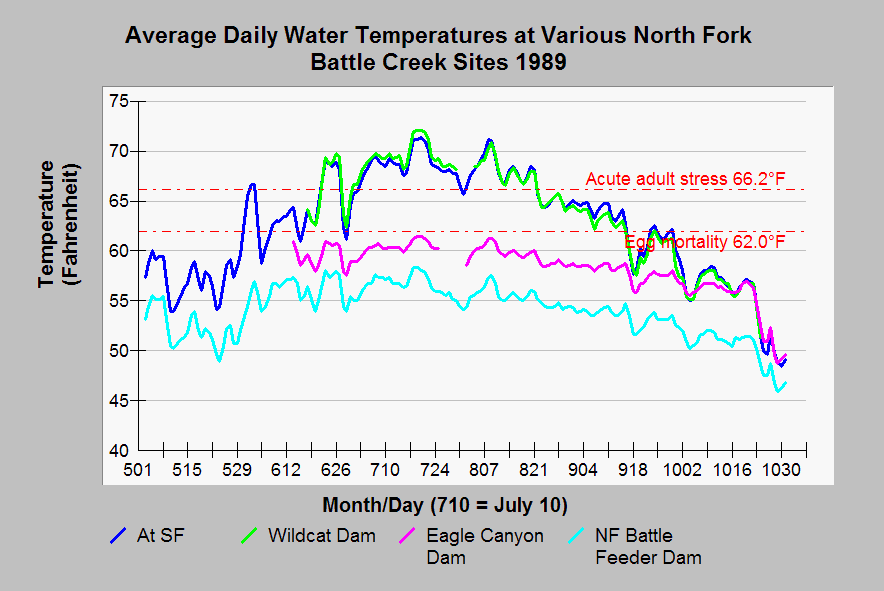| Area | North Fork Battle |
| Topic | Temperature: Average at 4 North Fork Locations 1989 |
| Caption: This graph shows daily average water temperatures at four North Fork Battle Creek sites in 1989. Thresholds shown on the graph above are for the egg life history stage before July 1 for winter chinook and after September 15 for spring chinook eggs and for holding adults spring chinook during summer. The temperature trend shows an increase with downstream locations which also coincides with lower elevations. The warmest temperatures are above the confluence with the South Fork (ABC) and at the Wildcat Diversion Dam (WLD). High temperatures at these locations were partially as a result of low flows related to hydropower operation. Temperatures became cool enough for holding adult spring chinook at Eagle Canyon Diversion Dam (EDD) and the North Battle Feeder Dam (NFD). The thresholds for adult and egg stress and mortality shown on the graph are as follows: es = egg stress (>58 F), em = egg mortality (>62 F), as = adult spring chinook salmon stress (>61 F), ns = acute adult stress (>66 F) which equates with complete loss of fecundity if extended for a protracted period. See the next chart to compare with the same locations in 1996 when flows were higher. See Info Links for more information on temperature thresholds. | |
 |
To learn more about this topic click Info Links .
To view additional information (data source, aquisition date etc.) about this page, click Metadata .
To view the table with the chart's data, click Chart Table web page.
To download the table with the chart's data, click tempnf89.dbf (size 37,338 bytes)
To download the table with the chart's data as an Excel spreadsheet, click tempnf89.dbf.xls (size 26,712 bytes) .
| www.krisweb.com |
